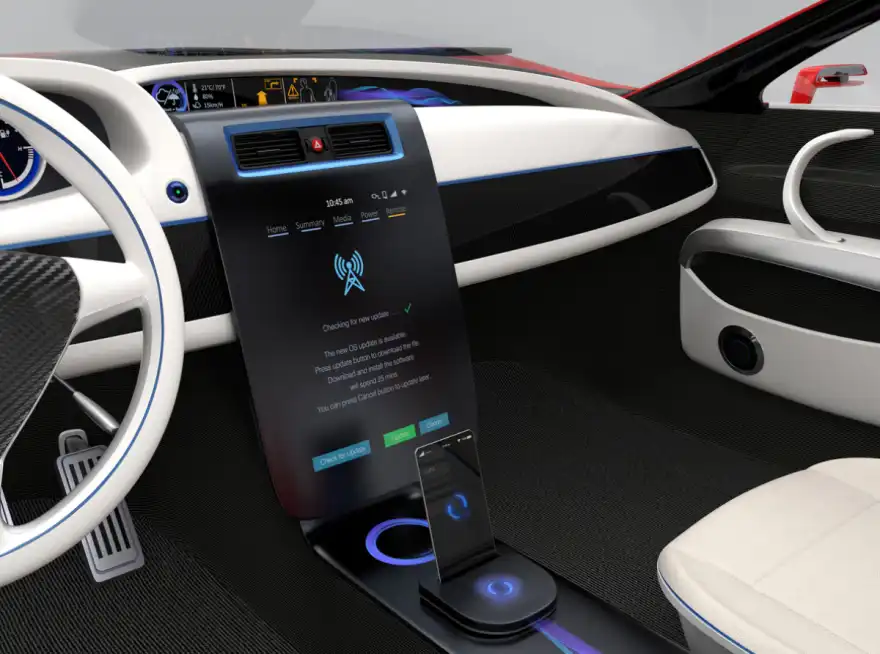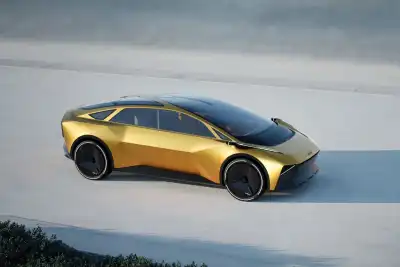
Our cars used to change only when we decided to modify them or when they needed repairs. You wouldn't just wake up to find a new feature or a sudden improvement in fuel efficiency.
But that's changing with the rise of software-defined vehicles. Now, much of what a car does is controlled by software that can be updated over the internet, allowing the car's functions to evolve over time.
One major way cars are improving is through over-the-air (OTA) updates. These updates are like digital downloads that automatically install while you sleep. They bring many benefits but also come with some risks. Let's dive into the details.
How do OTA updates work?
Software in cars includes everything from turn signal timing to autonomous driving features. Even things like ignition timing and advanced safety systems are controlled by code. As developers create new features or improve existing ones, they need to update the software. When these updates are delivered wirelessly, that's an OTA update.
Most OTA updates happen via cellular or Wi-Fi connections. According to Cisco's Laura Perek, "by 2024, at least two of the global top 10 automakers will be delivering monthly OTA code updates across their software-defined vehicle fleet". These updates need to be secure, which is where cybersecurity comes in. Ensuring that updates come from a trusted source is crucial to prevent malicious software from being installed.
What are the risks of OTA updates?
OTA updates can be incredibly convenient, but they come with some risks. One major concern is cybersecurity.
Ayyappan Rajesh, a cybersecurity expert who recently demonstrated how to hack a 2018 Honda Civic at DEFCON, explained that while OTA updates make it easier and cheaper to fix vulnerabilities, they also create opportunities for attackers to install malicious software on your vehicle.
To avoid these malicious updates, it's crucial for your car to verify the source of the code. Charles Eagan, CTO of BlackBerry, emphasises the importance of using signed images from trusted sources. This means using a digital signature created with a pair of keys (one public and one private) to ensure the update is legitimate.
Different parts of the car’s software require different levels of access. For example, software controlling steering and braking needs high-level access, while the infotainment system doesn't. Eagan explains that separating these systems helps limit what each part of the software can do, enhancing security.
This approach, similar to app permissions on your phone, ensures that high-risk operations can't cause significant damage if compromised. BlackBerry's QNX software further enhances security by running different functions in separate virtual environments, preventing any crossover.
Cisco, another leader in this field, uses similar methods to keep different systems secure. Laura Perek from Cisco explains that, just like in industrial security, connected vehicles must ensure that only authorised communications occur between different applications and services.
While OTA updates do present cybersecurity risks, careful management and robust security measures can help mitigate these risks, ensuring that the benefits of software updates outweigh the potential dangers.
What are the benefits of OTA updates?
Despite the risks, OTA updates offer many advantages. They can be divided into two categories: core driving functions and infotainment systems.
Core driving updates might include improvements to an electric vehicle's range or adding new driving modes. For example, Tesla has added new features to its cars through updates, and other manufacturers are likely to follow suit.
Infotainment updates could bring new features like improved climate control, updated maps, new media options, or even new seat massage routines. Cars are constantly sending data back to manufacturers, who use it to improve future updates.
Laura Perek of Cisco mentions that modern vehicles are now connected to a larger ecosystem, enabling new services and ongoing improvements rather than just one-time sales. Charles Eagan from BlackBerry believes we're on the verge of an automotive app ecosystem similar to smartphones.
Are cars becoming overly reliant on OTA updates?
There are some downsides, though. Cars might become too reliant on updates to function properly. This is similar to modern video games that require large updates before they're playable.
Additionally, updating older cars with software meant for newer models might cause performance issues and limit their shelf life. Unlike older cars that can keep running as long as you can fuel them, it’s unlikely that manufacturers will continue providing patches and updates for EVs decades after they’re made.
Some automakers, like Tesla, have faced challenges with incomplete software, and Volkswagen's ID4 initially struggled with sluggish software that required a dealership visit to update.
In the future, cars that can continuously surprise and delight their owners with new features and improvements will likely become the norm.



